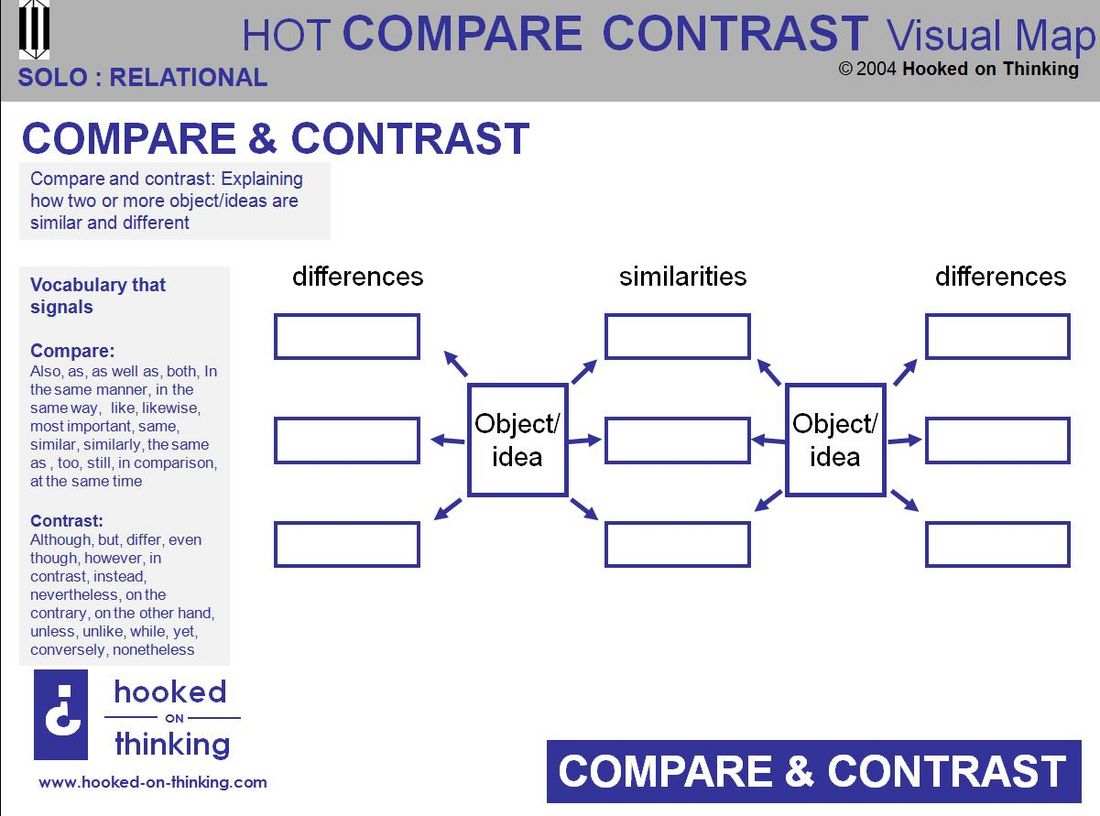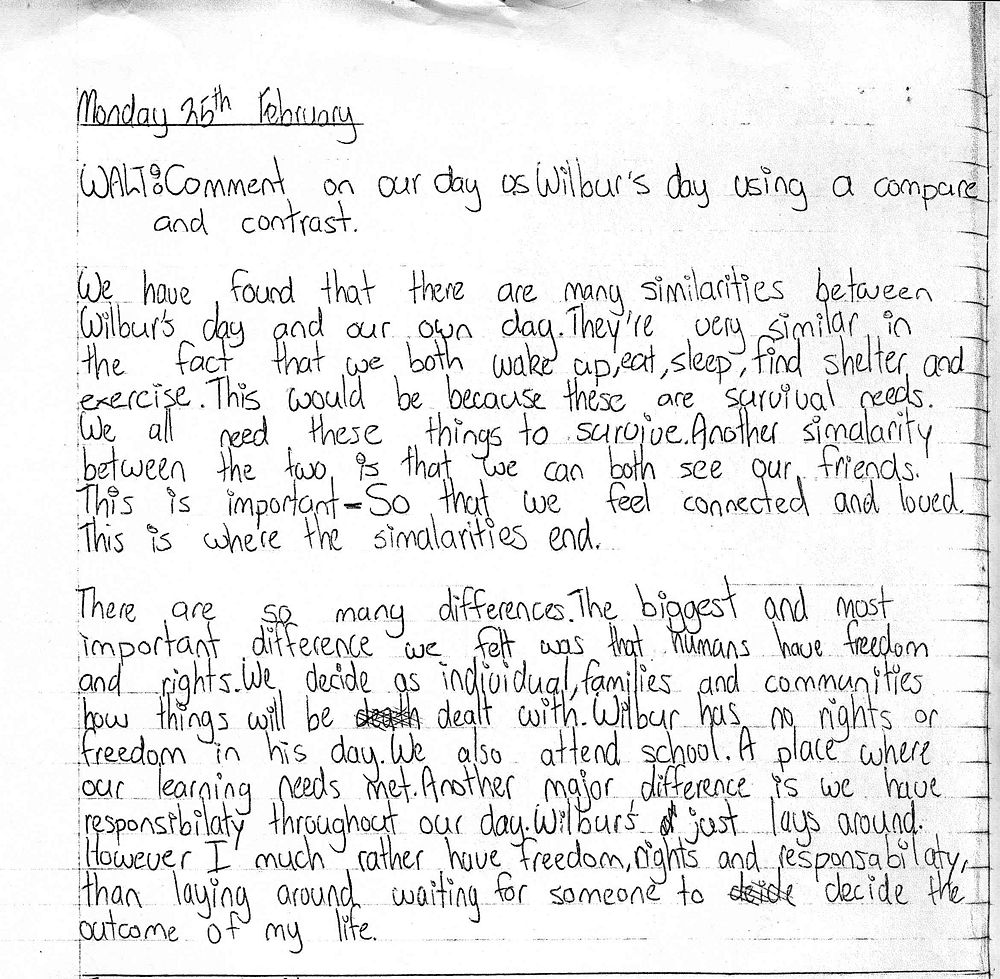The Language of Learning
Contents |
The Language of Learning
Developing a common language of the learning process
We identified the language of learning most commonly used in New Zealand schools by analysing the task descriptors used in Level One NCEA papers.
The most commonly occurring terms in the language of learning were developed into ten visual maps coded against student learning outcomes to help students understand the process of (or how to) define, describe, sequence, classify, compare and contrast, causal explanation, part whole analysis, analogy, generalise, predict and evaluate.
These Hooked on Thinking visual maps help make the language of learning visible to students whether they are five years old or eighteen years old.
The maps are introduced individually but are intended to be used fluently in a sequence of learning experiences designed to unpack an NZC Achievement Objective as shown below.
The language of learning represented in each HOT Map is coded against the student learning outcomes in the SOLO Taxonomy using a HOT student self assessment rubric.
[Note: We have also aligned SOLO Taxonomy against many other visual mapping resources, for example Hyerle's Thinking Maps and Bob Swartz's Maps. By aligning SOLO Taxonomy against visual maps and developing HOT student self assessment rubrics to support these maps, we allow more reliable and valid assessment for student learning (AfL). Schools and teachers have reported that this alignment against SOLO Taxonomy and HOT self assessment rubrics has both personalised learning outcomes and considerably strengthened student learning outcomes for their students using these other visual mapping packages as it has when students are using the Hooked on Thinking visual maps.]
For example, the HOT Compare and Contrast Map, in Figure X, is at SOLO Relational level because the process of comparison requires students to link ideas.
The student comparison learning outcome formed from the map can itself be coded against SOLO - in a HOT Self assessment rubric, For example - "comparison" asks students to find similarities and differences (multistructural LO), explain these (relational LO) and make a generalisation (extended abstract LO).
HOT Visual Maps

Figure X HOT Compare and contrast Map
HOT SOLO coded visual maps mimic the process steps required when students define, describe, sequence, classify, compare and contrast, do causal explanation, make analogies, predict, generalise and evaluate.
HOT SOLO Coded Self Assessment Rubrics
Each map is accompanied by a HOT self assessment rubric, where students’ thinking within each map is able to be coded against learning outcomes in SOLO Taxonomy. The HOT self assessment rubric allows students to answer both “How do I know how well I am learning?” questions and “How do I know what to do next with my learning?” questions.
For example, comparison is a thinking task coded at the relational level of SOLO Taxonomy. However, the HOT self-assessment rubric allows students to self assess their comparison across the different learning outcomes of SOLO Taxonomy, refer the SlideShare presentation and Table XX below
Media type="custom" key="5024685"
| Extended abstract |
My comparison has several relevant similarities and differences between [Wilbur's day and our day.], explains these AND makes a generalisation. Student exemplar: We have found that there are many similarities between Wilbur's day and our own day. They're ver similar in the fact that we both wake up, eat, sleep, find shelter and exercise. This would be because these are survival needs. We all need these things to survive. Another similarity between the two is that we both see our friends. This is important - So that we feel connected and loved. This is where the similarities end. There are so many differences. The biggest and most important difference we felt was that humans have freedom and rights. We decide as individuals, families and communities how things will be dealt with. Wilbur has no rights or freedom in his day. We also attend school. A place where our learning needs are met. Another major difference is that we have responsibility throughout our day. Wilbur just lies around. However, I'd much rather have freedom, rights and responsibility than laying around waiting for someone to decide the outcome of my life. |
| Relational |
My comparison has several relevant similarities and differences between [Wilbur's day and our day.] AND explains these. Student exemplar: We have found that there are many similarities between Wilbur's day and our own day. They're ver similar in the fact that we both wake up, eat, sleep, find shelter and exercise. This would be because these are survival needs. We all need these things to survive. Another similarity between the two is that we both see our friends. This is important - So that we feel connected and loved. This is where the similarities end. There are so many differences. The biggest and most important difference we felt was that humans have freedom and rights. We decide as individuals, families and communities how things will be dealt with. Wilbur has no rights or freedom in his day. We also attend school. A place where our learning needs are met. Another major difference is that we have responsibility throughout our day. Wilbur just lies around. |
| Multistructural |
My comparison lists several relevant similarities AND differences between [Wilbur's day and our day.] Student exemplar: One similarity between Wilbur's day and our day is that we both wake up, eat, sleep, find shelter and exercise. Another similarity between the two is that we both see our friends. The biggest and most important difference we felt was that humans have freedom and rights. Wilbur has no rights or freedom in his day. Another major difference is that we have responsibility throughout our day. Wilbur just lies around. |
| Unistructural |
My comparison has one relevant similarity OR difference between [Wilbur's day and our day.] Student exemplar: One similarity between Wilbur's day and our day is that we both wake up. |
| Prestructural |
I need help to compare [Wilbur's day with our day] |
Table XX HOT Compare and Contrast self assessment rubric and student exemplar.
Fig XX: Comparison of Wilbur's Day and Our Day [Year 7 Student]
Students using HOT SOLO coded self assessment rubrics
Emma Watts at Edendale School's students experimented with using HOT compare and contrast maps during Conservation week. They compared New Zealand Native frogs and kiwis. The class then created their own self assessment rubric (AfL) to support their relational and extended abstract thinking.
Mike Boon's students at Maungawhau School self assessing their definitions
HOT Visual Maps Teaching Exemplars
HOT Maps Jean Batten School
Lida Mansilla on introducing HOT Visual Mapping
HOT Describe Visual Map
[Year 1 Student work]
HOT Sequence Visual Map
[Year 5 and 6 Student Work]
Fluent Use of HOT Maps
File:HOT Maps Technology SoftMaterials Fashion.pdf
File:HOT Maps Compulsory Schooling.pdf
Using HOT Maps and self assessment rubrics to scaffold student inquiry at Waikowhai Intermediate School.
Pam Hook
September 2008
| ||||||||||||||||||||||||||||||||||||
Copyright © Hooked on Thinking. Pam Hook and Julie Mills, 2004 to 2011. All rights reserved.
Unless clearly stated otherwise, copyright material contained on this site is the intellectual property of Hooked on Thinking, Pam Hook and Julie Mills.
You may not use this work for commercial purposes. You may not alter, transform, or build upon this work without the written permission of the rights owner.






